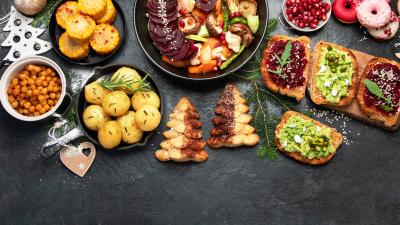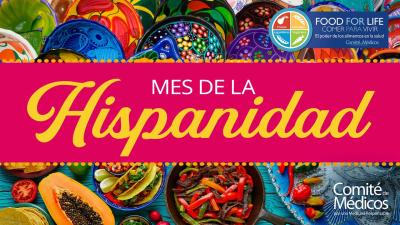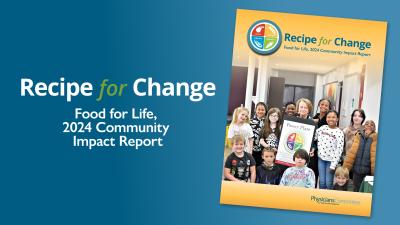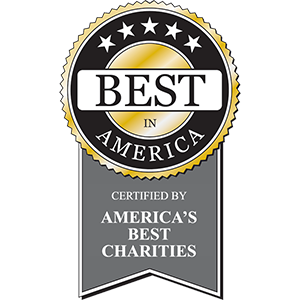Let’s Fill Food Banks With Healthy, Compassionate Choices

Food banks and pantries are becoming lifelines for an increasing number of individuals across the country. As demand increases, many of these organizations are struggling to keep their shelves stocked.
For households already facing challenges—from higher rent and transportation costs to uncertainty around nutrition programs like the Supplemental Nutrition Assistance Program (SNAP) and the Special Supplemental Nutrition Program for Women, Infants, and Children (WIC)—community support can make a real difference.
That’s why we’ve created a new resource: a list of plant-based foods that are affordable, in demand, and nourishing. These are the kinds of items that can help families prepare satisfying meals while aligning with a plant-based, health-promoting lifestyle.
Inspired by Real-World Experience
This list was developed with guidance from Food for Life instructor Jill Erickson, who managed Flourish Food Market, a vegan food pantry she co-founded in south Minneapolis through her company, Rooted Green, and the nonprofit Flourish Placemaking Collective.
“When we opened Flourish, we wanted to make sure everyone, regardless of income, could access fresh, healthy food,” Jill says. “In many neighborhoods, those options just aren’t easy to come by. We wanted to change that by creating a space that offered dignity, choice, and truly nourishing foods.”
Flourish Food Market operated for five years, offering neighbors access to healthy, plant-based foods at a time when many traditional food pantries offered limited vegan options. The market is currently taking a pause as they seek sustainable funding, though there are hopes it will reopen in the future.
“Shortly after we opened Flourish Food Market’s doors, a neighbor (we referred to our shoppers at Flourish as our neighbors) told me that there is a misconception she often experiences, and that is that people who rely upon food shelves don’t care about their own health or the food they eat. She expressed that she is a longtime vegan and yet struggles to find healthy plant-based options within the food assistance outlets in proximity to her. She was so grateful for Flourish Food Market being a fully vegan market where she could shop with dignity, having the power to select what she wanted without it being chosen for her, as well as having a market full of healthy options. This list includes foods that were not always easy to keep in stock because they were often not readily available in other food pantries, yet, as a fully vegan market, Flourish Food Market aimed to keep them in stock as best we could. These items were the most popular,” Jill says.
The Plant-Based Donation List
These items are affordable, easy to find, and versatile. They can serve as the foundation for countless simple, nourishing meals.
Dry Goods & Grains
- Pasta
- Rice, quinoa, or other ready-to-serve grains
- Oats
- Flour (e.g., unbleached all-purpose, corn masa)
- Cereal (whole grain, low sugar if possible)
Canned & Jarred Foods
- Beans (e.g., black, kidney, chickpeas, lentils)
- Soups (vegetable-based, low sodium if possible)
- Vegetables (e.g., corn, peas, carrots, green beans)
- Fruits (in 100% fruit juice, not syrup)
- Pasta sauce (tomato-based)
Flavor Boosters
- Dried herbs and spices
- Salt-free seasoning blends
- Vanilla extract
- Maple syrup
Everyday Basics
- Bread (especially sandwich loaves)
- Shelf-stable plant milk (e.g., soy, oat, almond)
- Peanut butter or other nut/seed butters
- Tea bags
- Ground coffee
Fresh & Frozen Produce (If Accepted)
- Apples
- Oranges
- Potatoes
- Frozen vegetables
- Frozen fruits
Additional Options
- Hummus (shelf-stable or refrigerated, depending on pantry capacity)
- Egg replacer
An Extension of Our Work Around Affordability
This donation guide builds on our ongoing work to show how plant-based eating can be both nourishing and one of the most affordable ways to eat.
In our recent post, 40+ Budget-Friendly Plant-Based Recipes to Help You Eat Healthy for Less, we highlighted how staple foods like beans, lentils, rice, oats, and pasta can stretch grocery dollars without sacrificing nutrition or flavor.
Earlier this year, we also explored practical strategies for saving money while eating more plant-based foods in How to Eat Plant-Based on a Budget: A Dietitian’s Guide. Together, these resources offer a roadmap for preparing affordable meals.
Our recent Morning Consult survey helped reveal why this conversation is so important. Conducted in June 2025, it found that more than 60% of U.S. adults believe a plant-based diet is more expensive than one that includes meat and dairy—a misconception that often keeps people from trying it. Yet, the same survey found that 70% of respondents spend the most money on meat.
Meals built around whole or minimally processed plant foods—like beans, grains, tofu, and vegetables—are often far more affordable than meals centered on meat and dairy, and research backs that up.
A 2024 Physicians Committee study published in JAMA Network Open found that participants following a low-fat vegan diet spent 19% less on food—saving about $1.80 per day—compared with those eating a typical American diet that included meat and dairy. The difference came largely from spending less on animal products and added fats, even after slightly higher spending on vegetables and grains.
Other studies echo these findings. A 2021 Oxford University analysis found that eating a vegan diet could cut food bills by up to one-third, and a 2022 study found that people following plant-based diets spent less on food overall than any other dietary group.
All of this points to a hopeful takeaway: Healthy, affordable food is within reach. Centering meals—and donations—around simple plant-based staples helps make nutritious eating accessible to more people, without stretching budgets thin.
Take Action
If you plan to donate, consider contacting your local food bank or pantry first to ask which items are most needed and whether they can accept refrigerated or frozen foods.
Even small contributions—like a few cans of beans, a bag of oats, or a carton of shelf-stable plant milk—can help families prepare nourishing meals.
Together, we can help make healthy, plant-based eating more accessible to everyone.
For more recipes that use these ingredients, see our post on 40+ budget-friendly recipes.
Xavier Toledo, MS, RD, LDN
Xavier is a plant-based registered dietitian passionate about making nutrition education engaging and accessible. He bridges the science with practical guidance, helping people translate evidence-based recommendations into simple, actionable steps for everyday life.









